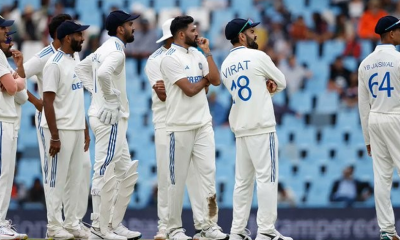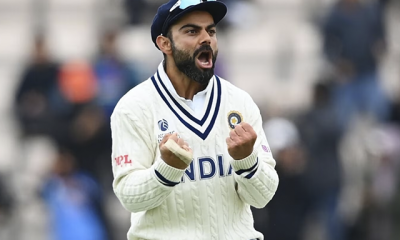
The first of the three-match T20I series between India and South Africa had everything that cricket fans wanted – high scores, sixes and a competitive game of cricket. However, the result didn’t go in India’s favour as their team lost despite making a big total. India scored 211 runs with the help of Ishan Kishan’s resolute 76 as well as quick cameos of 29 and 31 from Rishabh Pant and Hardik Panya respectively. Yet, they lost with five balls remaining. The batting duo of David Miller (64) and Rassie van der Dussen (75), snatched away the game which came as a shock to many.
So let’s look at the three reasons why India lost to South Africa in the first T20.
Poor Bowling
Indian bowlers were only able to take three wickets despite the South Africans being under the pressure of a massive total. That in itself points to a poor showing from the bowlers.
Having practised in the Indian T20 League for a couple of months, all of India’s bowlers came with significant experience. Despite that, they could neither stop the flow of runs nor take breakthrough wickets. The lowest economy from Indian bowlers was 8.8, with experience bowlers like Bhuvneshwar Kumar and Chahal going for 10.8 and 12 respectively. None of the players seemed troubled by India’s bowling which points to a very tough time ahead for Indian bowlers.
Dropped Chance
The most significant moment of the second innings came in the 15th over when Avesh Khan lured van der Dussen with a slower wide ball. Dussen hit it straight to Iyer at mid-wicket and it looked like his match was done.
Contrary to his usual standard, however, Iyer dropped the catch. This was when Duseen changed his gears and became a whole different player altogether. Up until this time, the right-hander was looking rusty and knicking balls all over the ground. In the very next over after his dropped catch, however, he hit Harshal Patel for 22 runs. It wouldn’t be incorrect to say that this dropped catch had a massive bearing on the result of the match.
Poor Captaincy
Rishabh Pant was asked to lead in the absence of the injured KL Rahul. After Delhi’s exit from Indian T20 League, however, there have been doubts over his captaincy skills and many feared it would be detrimental to India’s cause.
While the Delhi captain is not completely at fault for India’s loss, some questionable bowling changes suggest he had a big hand in it. The decision to keep Yuzvendra Chahal from bowling half of his quotas is one of them. That too when Chahal looked good. Although the spinner was hit for 16 runs in his first over, he had a great comeback and gave just 6 in the next. He was however nowhere to be seen for the entirety of the game in what could only be termed as bad captaincy.




































